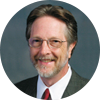One indication is the specific invitation for chiropractic institutions to testify before the historic White House Commission on Complementary and Alternative Medicine Policy (WHCCAM). This body has significant authority vested in its creation, and the product of its deliberations has the potential to beneficially impact chiropractic at the federal policy level. I was invited to testify as the principal investigator of the Consortial Center for Chiropractic Research, and I was asked to specify the changes that should be made in federal policies and procedures to enhance chiropractic research. My comments, which were allowed for 10 minutes, were taken down verbatim by a court reporter (and have been printed elsewhere).
It was interesting to note my fellow invitees on this panel. They included the former president of Bastyr University, Dr. Joe Pizzorno, and academic officials from the University of Pennsylvania and Harvard University. As you might imagine, there were distinct differences in our comments, with mine being very similar to those of Dr. Pizzorno. For example, when asked if federal programs to train CAM scientists should be established for CAM institutions, neither of the medical school officials thought it was necessary. Several members of the commission approached me at the break to voice their support for my position, which was, of course, that we have a desperate need to train chiropractic scientists at chiropractic colleges.
Another historic event, which has also been reported elsewhere, is that the Palmer Center for Chiropractic Research has been awarded a "bricks and mortar" grant to renovate and expand its research facility. The building will eventually house both clinical research and basic science laboratories, which will vastly improve our chances of attracting even more support for chiropractic research down the road. The fact that the government is willing to invest the taxpayer's money in this way is important, and it proves that high-quality applications from chiropractic institutions can be successful. I hope that every chiropractic college seizes this opportunity to build our total scientific infrastructure.
From my vantage point as a member of the Council of the National Center for Complementary and Alternative Medicine (NCCAM), I also know that its director, Stephen Straus, is highly committed to training career CAM scientists, and has incorporated this objective in its strategic plan. There are specific funding programs to train chiropractors in clinical research, and all chiropractic institutions now have the opportunity to apply. I would go so far as to say that a "paradigm-shift" in our thinking could occur. Chiropractic researchers must eliminate their poverty mind-set. Millions of dollars in federal programs are becoming available to us; we simply must develop the expertise to obtain them.
The playing field is not yet level. I note that there is not a single chiropractor on the White House Commission on CAM policy. There are no chiropractors as permanent members of any NIH study section. (Study sections review proposals and decide which will be funded.) There is still but a single chiropractor working in the federal research bureaucracy. Chiropractors are not represented in CAM research circles in proportion to the level of care they deliver to the public. Only one chiropractic journal is included in Index Medicus. There are only about 70 full-time equivalency chiropractic researchers in North America, et cetera. There is still a great distance to travel before chiropractic science takes its rightful place, but it is nice to see that hard work, determination, perseverance and institutional support can prevail.
William Meeker,DC,MPH,FICC
Principal Investigator,
Consortial Center for Chiropractic Research
Davenport, Iowa
Click here for previous articles by William Meeker, DC, MPH, FICC.





